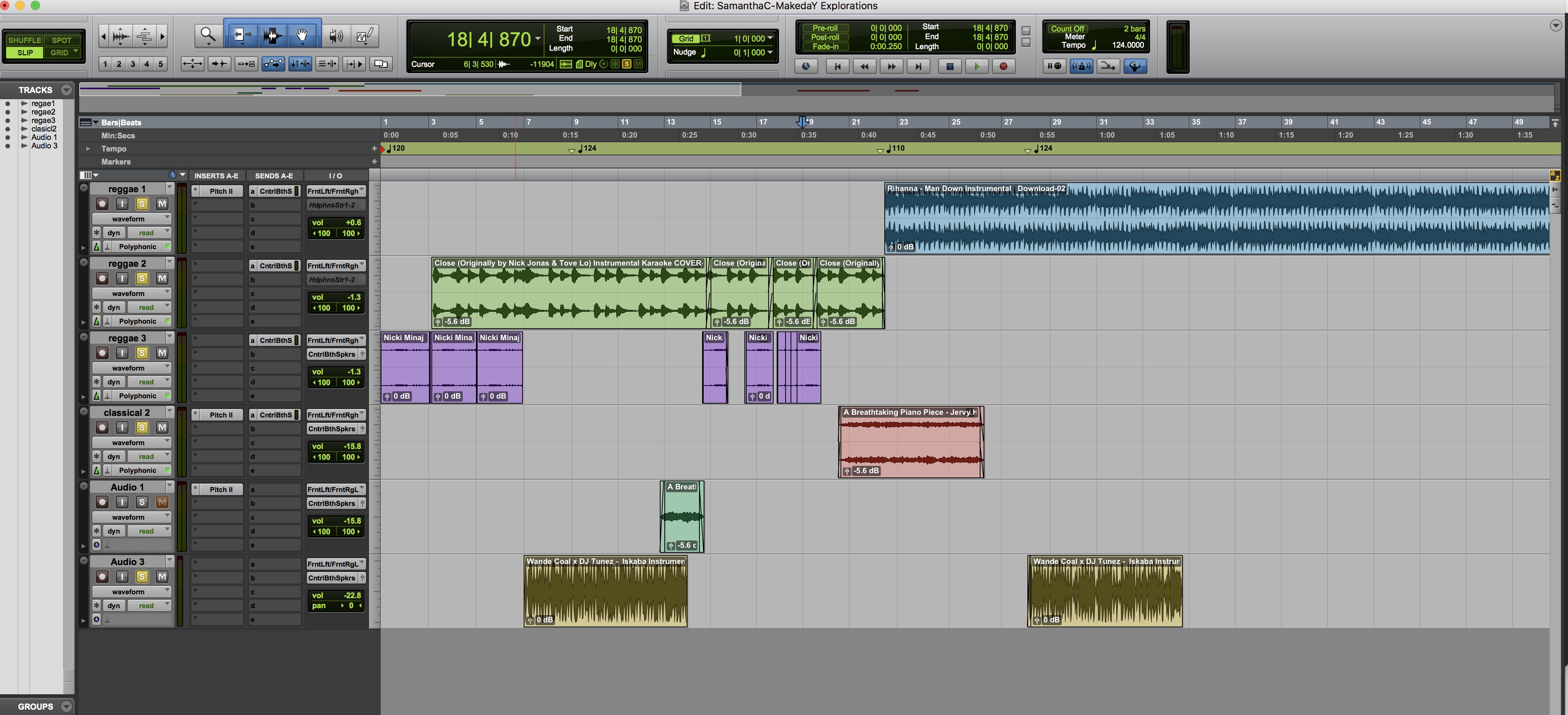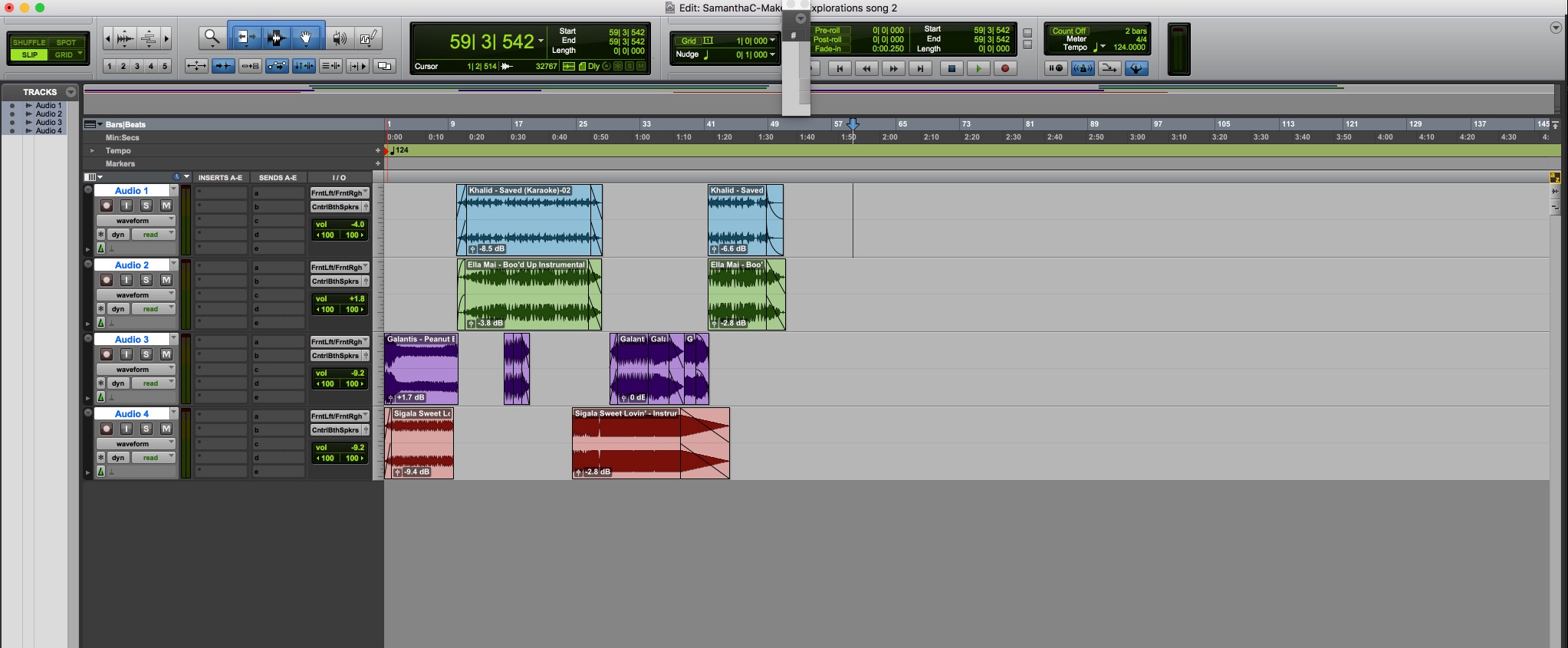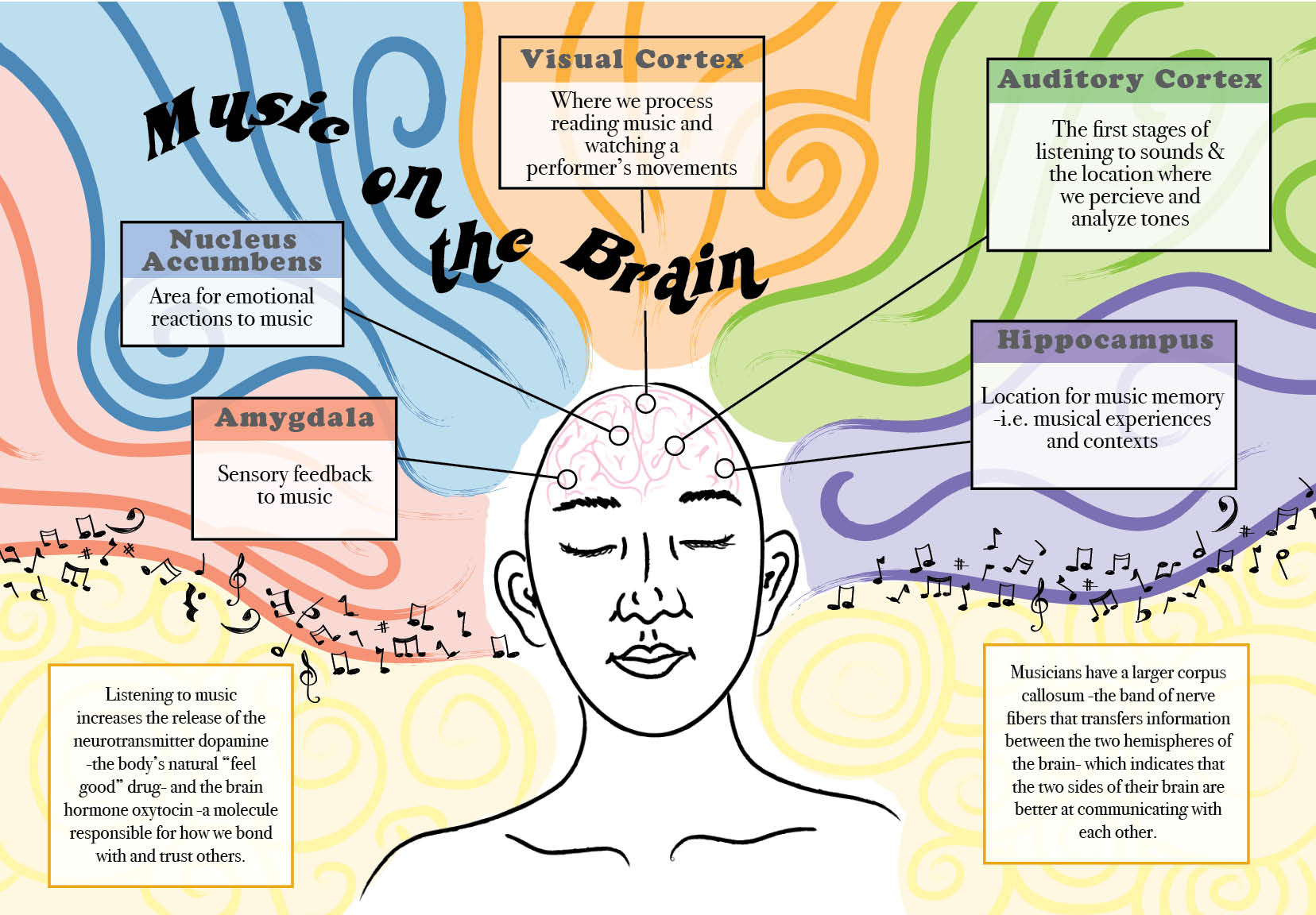Introduction
For our explorations project, we chose to exercise the team and collaboration 21st century skill. Our overall goal was to investigate the effects different genres of music have on someone's brain thus affecting their emotions. For our ending product, we mixed two different genres together in 2 different songs to provoke different emotions in listeners. We chose to mix reggae and classical together, and R and B and EDM together.
Music can help people with anxiety, depression, stress, and focus. It can help stress by lowering the stress hormone cortisol. Music can also release chemicals in our brain that help our health. For example, when you listen to or play music you like with people at a concert, in your car, or bedroom, the brain can release a chemical called oxytocin, a chemical which builds trust and helps establish bonds with others. Music can also help the brain release the chemical dopamine which is the body’s “feel good” natural drug and helps make us more motivated. Our brains respond differently to happy and sad music. One study showed that after hearing a short piece of music, participants were more likely to interpret a neutral expression as happy or sad, to match the tone of the music they heard. There are two kinds of emotions related to music: perceived emotions and felt emotions. This means that sometimes we can understand the emotions of a piece of music without actually feeling them, which explains why some of us find listening to sad music enjoyable, rather than depressing. Unlike in real life situations, we don’t feel any real threat or danger when listening to music, so we can perceive the related emotions without truly feeling them—almost like vicarious emotions. Listening to anything at a moderate noise level is great for creativity. How this works is that moderate noise levels increase processing difficulty which promotes abstract processing, leading to higher creativity. Music also helps us exercise because by listening to music you can drown out our brain’s cries of fatigue during an intense workout. Normally, as our body realizes we’re tired and wants to stop exercising, it sends signals to the brain to stop for a break. However, listening to music competes for our brain’s attention, and can help us to override those signals of fatigue. This is mostly beneficial for low- and moderate-intensity level exercises. During high-intensity exercises, music isn’t as powerful at pulling our brain’s attention away from the pain of the workout. When you make your workout playlist, you should keep in mind that recent research has shown that any music higher than 145 bpm, does not add much motivation to our bodies. A study on music listeners was done using functional magnetic resonance imaging, or fMRI, which depicts brain activity by detecting changes in blood flow. It was concluded that the listeners' music preferences, and not the type of music they were listening to, had the greatest impact on brain connectivity -- especially on a brain circuit known to be involved in internally focused thought, empathy and self-awareness. This brain circuit, called the default mode network, was poorly connected when the participants were listening to the music they disliked, better connected when listening to the music they liked and the most connected when listening to their favorite songs.
It was way harder than we anticipated to make the songs. The bpms didn’t match and when we did try to set their tempos equal to each other, things still weren’t sounding good. We also learned that while music may not necessarily cure anything in the future, it does play a therapeutic and influential role in our lives. We know that this was purely a learning experience and hope to improve upon our skills in music production in the near future and hopefully make an original piece next time!



